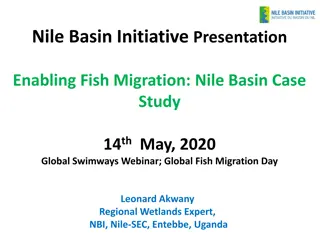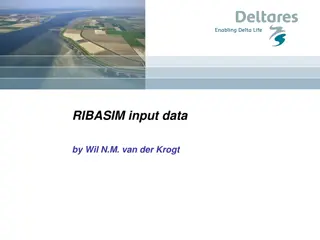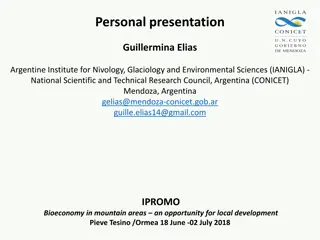Sepulveda Basin Reserve: Bull Creek Ecological Study
Sepulveda Basin Reserve: Bull Creek conducted a study focusing on riparian vegetation, with a special analysis of native vs. exotic species diversity. The research revealed challenges such as homeless populations affecting transecting efforts. Results indicated a significant impact of native species on ecosystem strength and resilience. The conclusion suggests further data collection, enhanced maintenance practices, and addressing trash issues for plant protection.
Download Presentation

Please find below an Image/Link to download the presentation.
The content on the website is provided AS IS for your information and personal use only. It may not be sold, licensed, or shared on other websites without obtaining consent from the author.If you encounter any issues during the download, it is possible that the publisher has removed the file from their server.
You are allowed to download the files provided on this website for personal or commercial use, subject to the condition that they are used lawfully. All files are the property of their respective owners.
The content on the website is provided AS IS for your information and personal use only. It may not be sold, licensed, or shared on other websites without obtaining consent from the author.
E N D
Presentation Transcript
Sepulveda Basin Reserve: Bull Creek Angel Arturo Nicole Zoi
Introduction Sepulveda Basin Reserve: Bull Creek - breaking new ground Special focus on Riparian Vegetation Collection of new data vs data collected at Northern Reserve Chi square testing : 1) species mix 2) native vs exotic
Data and Methods Bull Creek 3 Main areas 15 parallel transect 10 meters 10 unique species identified; 165 samples total Common Species Mule fat Purple sage Bare ground Exotic Species Johnson grass
Problems while Transecting Homeless population Under bridges In tents Litter Trash around trail Inside Alternative paths Pathways carved from people walking through, but not the actual trail
Results - Species mix analysis - Alpha level = 0.10 - X2calc = 3.859 - X2crit = 4.605 - Prob-value = 0.145 - Effect size = 0.132 - Power = 0.528 - Null Hypothesis Accepted - Natives species vs. exotic species - Alpha level = 0.10 - X2calc = 50.118 - X2crit = 2.706 - Prob-value = 0.0 - Effect size = 0.342 - Power = 1.0 - Null Hypothesis Rejected (effect size measure) Cram r's V Corrected power (Rodrigue) (effect size measure) Cram r's V Corrected Power (Rodrigue) X2calc 0.132 X2calc 0.342 3.859 50.118 alpha df X2crit prob alpha df X2crit prob 0.528 1 0.1 0.1 2 1 4.605 0.145 2.706 0
Discussion Importance of species diversity and richness susceptibility to disease successful ecosystem Natives > exotics strength and resilience of natives Further research advised
Conclusion : 1st test : Null accepted 2nd test : Null rejected Recommendations : Further data collection by successors Better maintenance, Trash problem and potential risks to plants























